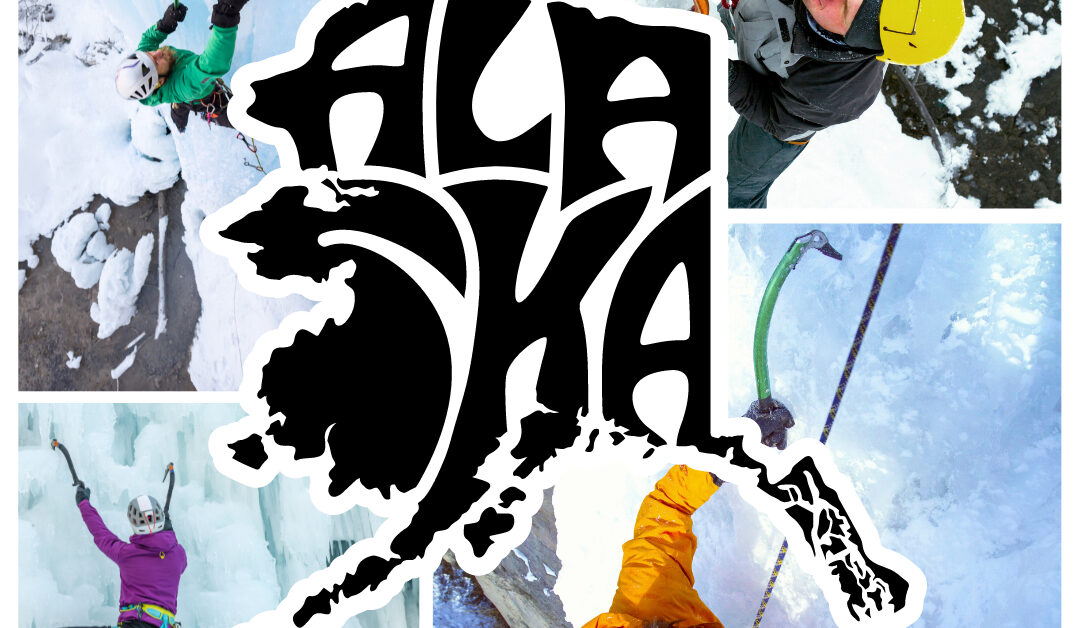
In this article, Golden Mountain Guide Pat Schamlix talks about the wonder that is ice climbing in Alaska. Looking for beta? Read more to learn about the adventure waiting for you up North.
– Maddog
– TJ Swann
– Ripple
When most people think of ice climbing in Alaska their thoughts are immediately drawn to the world-class climbing in the Alaska Range or Valdez area and for good reason. Both of these areas draw world-class athletes putting up test pieces most people couldn’t fathom climbing. But what most people don’t know is that within a two-hour drive of Anchorage, there are over 100 routes, many are within reason for the beginner or intermediate ice climber.
There is a reason I told my wife I’d like to live in southwest Colorado, Montana, or Alaska when I retired. I was lucky enough to visit and climb in these areas along with many others, but I think I hit the jackpot with living in Alaska! If I don’t get 40+ days climbing ice a season I get quite upset. Generally, there is climbable ice around Thanksgiving all the way until mid-April (I have climbed before Halloween and in May before), but the prime season is mid-January until mid-March.
I’d say the two biggest questions I get about ice climbing in Alaska are “isn’t it dark all the time” and “how cold is it”. The answer to the first one is “NO, not in the Anchorage area”. Yes, Alaska is quite north and does have long nights but on December 21st (the shortest day of the year) the sun rises around 10:15 in the morning and sets about 3:45 in the afternoon making for about 5½ hours. Use civil twilight and you gain about an hour on each side, making for about 7 hours of “usable light”. Granted, this is the shortest day of the year also. That is why I mentioned “Prime season” above. Jump to mid/late February and you’re looking at 10 hours between sunrise and sunset. The answer to the second question is “it can be”. Just like everywhere else, the temperatures fluctuate throughout the winter, so it really does matter on the location of the climb and the current weather. Winter temperatures can range from -20 F up to 45 F depending on the weather patterns. Climbing when temperatures are below about -5 is more work than fun, both because it’s hard to stay warm (keep your fingers working) and because the ice gets very hard and brittle.
Our approaches in Alaska are MUCH different than those in Colorado and elsewhere. Most of the climbs are approached via hiking/skiing/snow machining up frozen rivers. We basically walk the river to the base of the climb and start from there. Some climbs do however start 100 feet or so above the river, but no long hour-long uphill slogs. Most people that have visited to climb are just flabbergasted at the simple access to amazing ice in the area. If the temps are favorable and traffic wasn’t an issue you could literally belay out of your car for some climbs.
There are also much fewer climbers than in Colorado, especially in the Front Range or Ouray areas. When I go into one of the climbing areas on a weekday I consider seeing another party or two to be busy. If I see more than that I’m bummed that it’s so crowded. However, weekends are a different story.
The Eklutna River area is one of the most popular spots near Anchorage. It’s approximately 35 minutes east of downtown Anchorage at an Alaska State Park trailhead (parking fee required). If the river is safe to walk on, drop down from the parking area and then hike the river to the climbs. In good conditions, it’s about a 25-minute pleasant stroll up the river to the majority of the climbs. If the river is impassable right from the parking area we hike a well-used trail (micro-spikes can be beneficial) for about 10 minutes or so then drop down into the canyon crossing a creek above the confluence then joining the Eklutna River again.
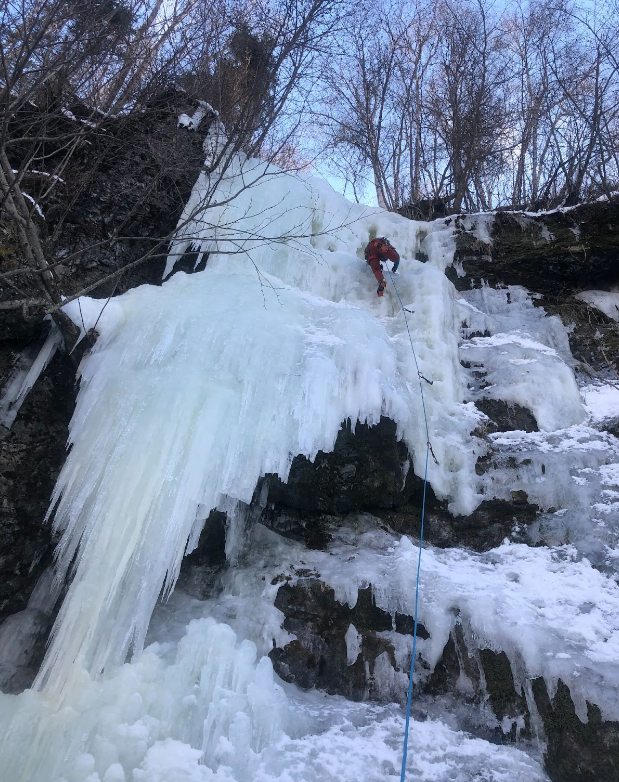
Ben Leading Maddog
If access is good and you drop down from the parking lot the first climb you will see (about 5 minutes) will be Maddog (WI3/4). This is probably one of the most abused climbs in the state because the top is easily accessible for setting up a top rope. The water supply also usually freezes up in late January, so it doesn’t get to heal itself like other climbs do. Many in the climbing community try to persuade others not to climb this route until it fully forms to no avail, making it into a mixed climb most years.
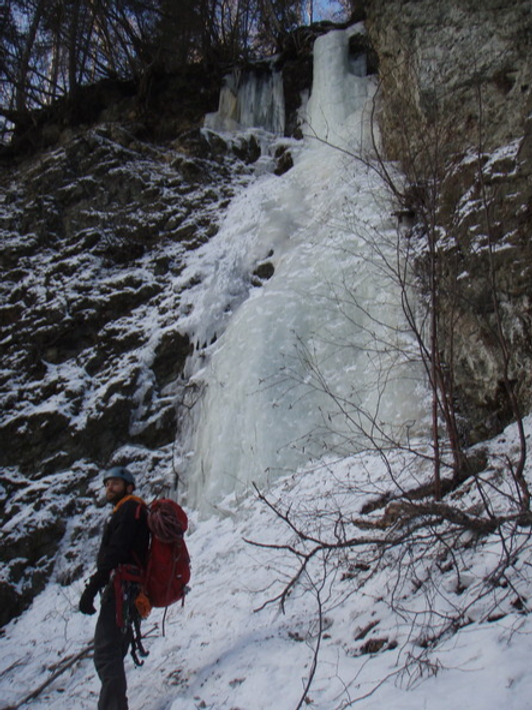
An old picture of Champipple
Continue up the canyon and the next climb you see (on a good year) is Champipple (WI4-). This climb hasn’t formed every year but has become somewhat more common than it has been in the past. You climb a mellow apron to a steep and somewhat hollow curtain.
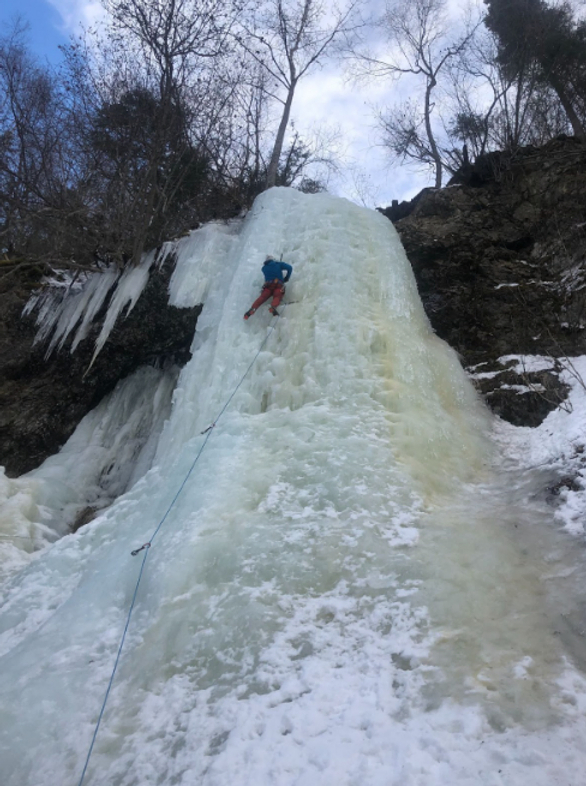
TJ Swann
Almost directly across the river is TJ Swann (WI4+). This is the “ice test piece” of the canyon. When I first started going to Eklutna Canyon (the mid-2000s) I remember thinking one of these days I’m going to climb that thing. It didn’t happen until the winter after I retired in 2016/17. This climb forms differently every year. Sometimes it can be as easy as WI3+, but most of the time it’s a solid WI4 with the left side coming in closer to WI5 (the guidebook calls it WI3 when I read that I immediately thought “somebody is going to get hurt”). Granted these are “Alaska Ice Grades” which seem to be stiffer than most areas in the Lower 48 that I’ve climbed in (excluding Cody, WY).
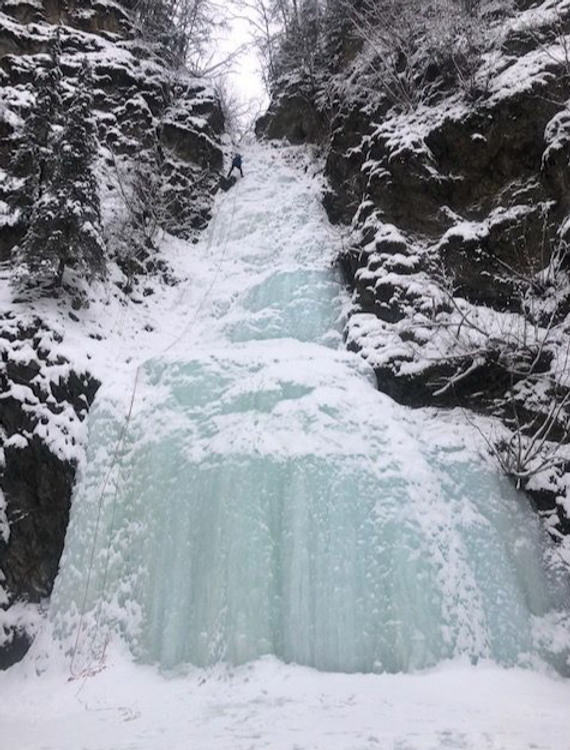
Ripple
Continue up the canyon a short way and the jewel of the canyon will come into view after rounding a bend. Ripple (WI3) is a full 55m long that seems to jut straight up out of the river and starts out somewhat steep, rolls over to a short low angle apron, then follows body length plus steps to the top. For many people, this is their first ice climb in the state. I remember taking a friend from California here and his comment was “THAT’s WI3” all I could say was “welcome to Alaska”. We both agreed it would be every bit of WI4 in California.
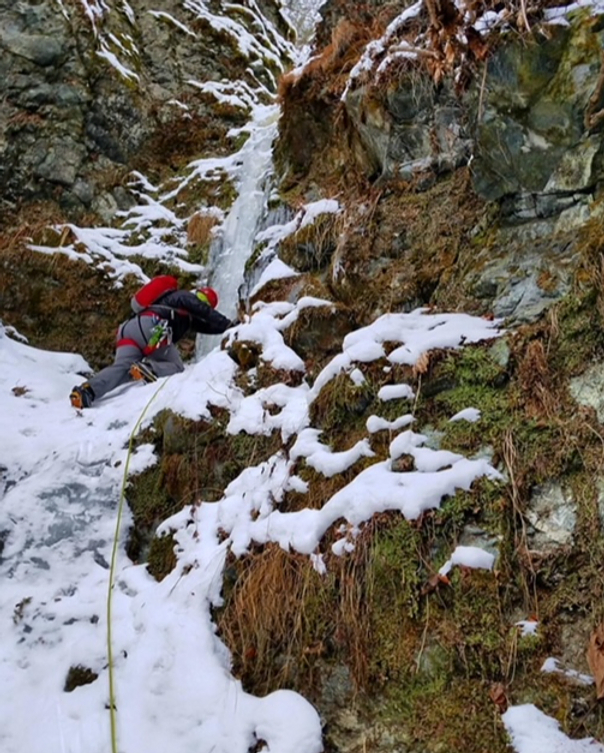
Boonesfarm in Early Season conditions
Around the next bend, you’ll come to Boonesfarm (WI3). This is another long climb that requires a 70m rope if you want to climb to the top from the river in one pitch, though two 60m ropes will get you back down. There is also a bolted anchor about 50m up, but most people skip it and do it in one pitch. The climb starts up on ice/snow/scree until you get established on the thicker ice, goes up a couple of mellow steps then climbs a steep section at the top. The upper section can form into a nice 6’ wide curtain or a small 2’ diameter pillar making for a sportier lead.
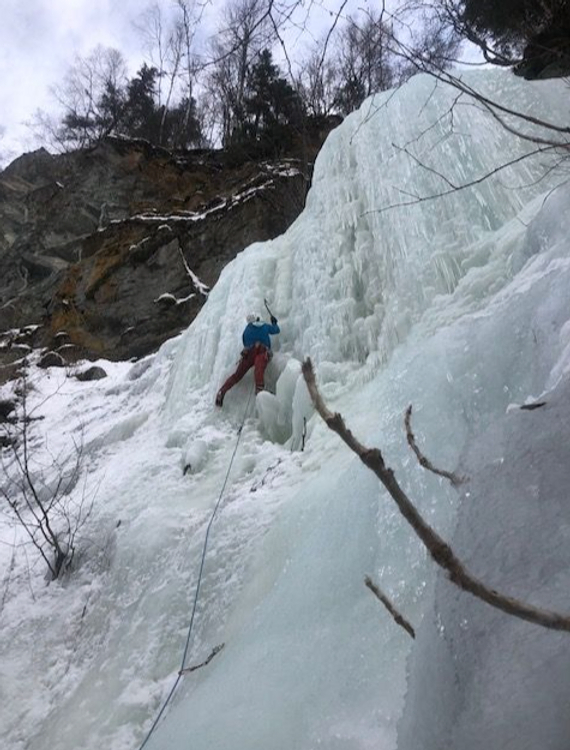
Annie Greensprings
Finally, there’s Annie Greensprings (rated WI3, but I’ve always considered this sandbagged). It generally forms in a steep curtain, sometimes a nice solid one, sometimes a chandeliered nightmare. Annie’s is always condition dependent and can change practically overnight.
These are the five most dependable climbs in Eklutna Canyon. There are others, but most rarely form or require some sort of shenanigans to get to. There are also 30 or more dry tooling routes in the canyon, but dry tooling isn’t my cup of tea so I only know the location and grades of a few of them.
The next area I’m going to talk about is the Beer Climbs. They are located another 25 minutes east of Eklutna Canyon or just shy of an hour from downtown Anchorage. These climbs are one of the few that walking uphill is required. Now don’t freak out, it’s still only a 15-minute approach for unguided parties. However, due to safety concerns, we will be getting the rope out on the approach. Multiple accidents have occurred at these climbs, either due to the approach, or everyone thinking they are easy climbs that draw inexperienced parties. People slipping on the approach with and without crampons, falling ice hitting people, others lowering off the end of their rope or a miscommunication on lowering/rappelling; I have heard or witnessed all these scenarios at his particular crag.
The two main (and easier) climbs are Henery’s and Blitz both in the WI2/3 range. For these two climbs you climb up the same approach gully then choose left or right. The left one forms in a nice wide flow that could accommodate several ropes, though it would be hard to do so with lack of stances. It goes at the WI2 range on the far-left side of it, but the right side forms a nice steep curtain about 15’ tall before topping out which makes for a great top rope. The right option follows the rambling gully up mostly easy ice to a large alcove then jogs left to a nice curtain before topping out. Both are fun climbs but not overly taxing.
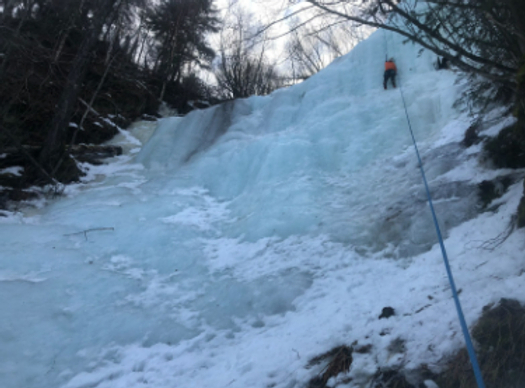
The Left Beer Climb
The third climb in the area is Pilsner Pillar (WI4/5). This climb is steep and makes for an exciting lead and a good way to get the pump going on top rope. Luckily there is an easier unnamed flow to the left that provides access to the top of Pilsner.
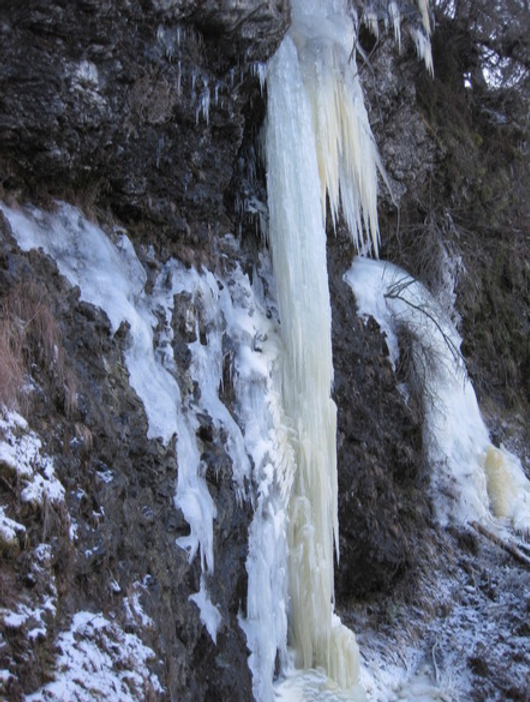
The ever-so-steep Pilsner Pillar
The next area contains one of my favorite ice climbs anywhere! Caribou Creek is a two-hour drive east of Anchorage along the Glenn Highway. This area is packed with about 15 routes, most at the WI4 level or greater. It also has one of the longer approaches for what’s considered “roadside” ice. All but one climb involves a beautiful but fairly long (3.5-5miles) hike up a broad river to get to the climbs.
Kid’s Corner (WI3), my favorite climb, just happens to sit a mere 15-minute hike from the car! This was my first real ice climb and also my first lead many, many years ago so it holds a special place, but the setting is just amazing. It’s positioned in a small canyon and is a stark contrast from the broad river valley you just turned off of. It always reminds me of a miniature Cody, WY. At many places, you can touch each wall with your tools in outstretched arms. It starts out with a fairly steep first pitch that ends in an alcove with a relatively flat stance. You continue up several smaller steps ranging from 8-25 feet to get to the base of the second pitch. This pitch is much less steep than the first, but also much longer, just about 35 meters long. This brings you to another good area at the base of the third pitch. This one can range from nice cruiser to a brittle mess with several steep steps. The final easy pitch brings you to the canyon rim and spectacular views of the Caribou Creek valley and parts of the Talkeetna and Chugach Ranges.
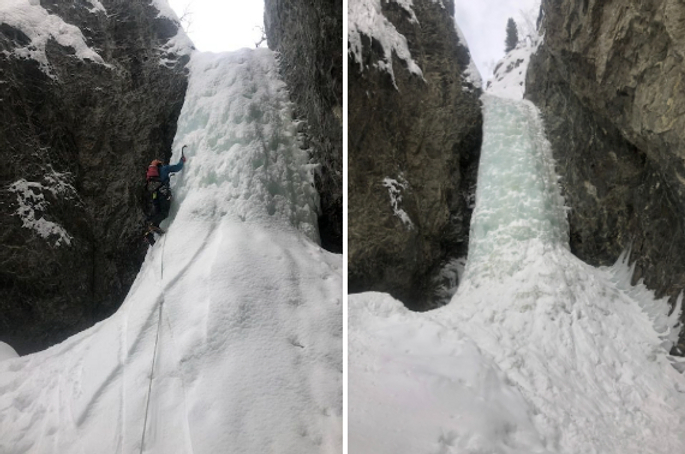
First pitch of Kid’s in different conditions
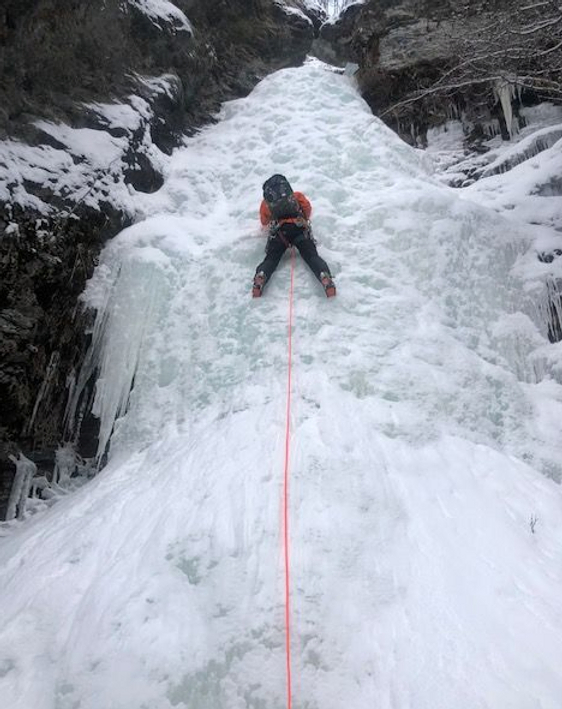
Third pitch of Kid’s


Content Copyright © 2024 of Golden Mountain Guides. All rights reserved. | Privacy Policy | Site Map